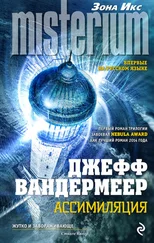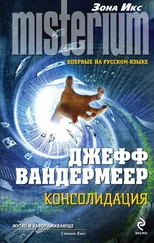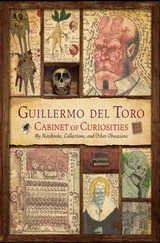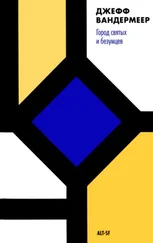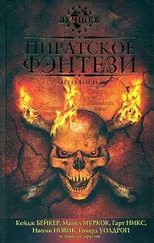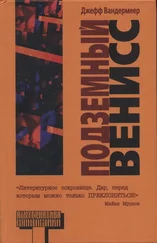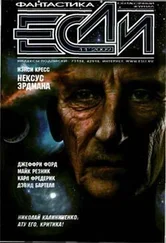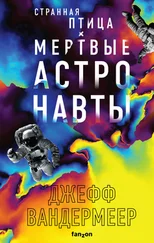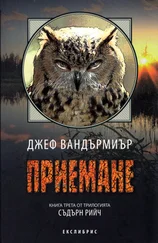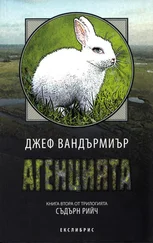Джефф Вандермеер - The Thackery T. Lambshead Cabinet of Curiosities
Здесь есть возможность читать онлайн «Джефф Вандермеер - The Thackery T. Lambshead Cabinet of Curiosities» весь текст электронной книги совершенно бесплатно (целиком полную версию без сокращений). В некоторых случаях можно слушать аудио, скачать через торрент в формате fb2 и присутствует краткое содержание. Жанр: Фэнтези, на английском языке. Описание произведения, (предисловие) а так же отзывы посетителей доступны на портале библиотеки ЛибКат.
- Название:The Thackery T. Lambshead Cabinet of Curiosities
- Автор:
- Жанр:
- Год:неизвестен
- ISBN:нет данных
- Рейтинг книги:5 / 5. Голосов: 1
-
Избранное:Добавить в избранное
- Отзывы:
-
Ваша оценка:
- 100
- 1
- 2
- 3
- 4
- 5
The Thackery T. Lambshead Cabinet of Curiosities: краткое содержание, описание и аннотация
Предлагаем к чтению аннотацию, описание, краткое содержание или предисловие (зависит от того, что написал сам автор книги «The Thackery T. Lambshead Cabinet of Curiosities»). Если вы не нашли необходимую информацию о книге — напишите в комментариях, мы постараемся отыскать её.
The Thackery T. Lambshead Cabinet of Curiosities — читать онлайн бесплатно полную книгу (весь текст) целиком
Ниже представлен текст книги, разбитый по страницам. Система сохранения места последней прочитанной страницы, позволяет с удобством читать онлайн бесплатно книгу «The Thackery T. Lambshead Cabinet of Curiosities», без необходимости каждый раз заново искать на чём Вы остановились. Поставьте закладку, и сможете в любой момент перейти на страницу, на которой закончили чтение.
Интервал:
Закладка:
St. Odhran’s coll
Reverend Orlando Bannister 1800–1900
Miniaturisation experiment? (c. 1899)
Organic material (wood, etc.) plus metals (various)
Loaned by the Barbican Begg Bequest at the City Museum (note, proprietorship challenged by Battersea Municipal Museum, by the Lambshead Trust, and by Greyfriars School, Kent)
L1922.11. bmm/LT/GFS
(Private viewing and reading of associated notes by appointment only.)
Notes
Greyfriars School in Kent claims this odd piece on the grounds that (a) Reverend Bannister was an ex-pupil still funded by the school to perform certain scientific investigations and experiments, and (b) the piece is possibly the work of another of its alumni, the sculptor and scientist John Wolt. Wolt disappeared from his lodgings in 1899, leaving only a brief note suggesting that he intended to take his own life (“My final journey, undertaken voluntarily, should not prove a difficult one, and I could ultimately come face to face with my Creator. Even if a little discomfort is felt, it will be as nothing compared to the joy of bringing the word of Our Saviour to God’s tiniest creatures. B. has convinced me of their intelligence and individuality, and therefore they must be possessed of souls, just as St. Francis, apparently, believed that animals, too, have souls. I am filled with humility and ecstasy when I consider that I was their first missionary. Though the transition be painful and not a little difficult, I am assured by B. that all will be well in the ultimate.”). This note and others are attached. In Reverend Bannister’s remaining journal fragments (the majority were eaten by rats while in storage), he writes for January 1, 1900: “W. proves to be an enthusiast, perfectly willing to aid me in my work. We both feel God has chosen us.”
One of the early cases of Seaton Begg (“Sexton Blake,” as he was known to readers of detective fiction) was reported as “The Fairy Murders” in the Union Jack magazine, a patriotic weekly, of February 16, 1901, featuring Griff the Man-Tracker, probably an invented creature.
This manuscript being by far the most complete, believed the work of Sir David Garnett Blake, great-great-grandson of Sir Sexton Blake of Erring Grange, Erring, Sussex.
The bare facts of the case were as bizarre as they were brief: The small daughter of a Bermondsey tailor claimed that her half-grown cat, Mimi, had eaten a fairy. Of course, no one would believe her, even though she insisted she had seen Mimi nosing around a tiny leg. Rebecca, of course, was rightly punished for telling stories. But a few days later, she came to her mother holding triumphantly a little human ear. The Rabinowitzes, her parents, were unusual in those days in that they were vegetarians. The only meat they bought was for their cat. It came from their local butcher, Jacob “Cocky” Cohen. They inspected the ear and decided it was not human. When they went to Cocky’s next, they would complain that monkeys and possibly other animals had been used in the preparation of his cats’ meat.
Then Rebecca found part of a miniature arm, dressed in what appeared to be a tiny silk blouse sleeve, and brought this to her horrified parents, who could no longer hide the truth from themselves. The following Tuesday, they confronted the butcher.
Suspecting them of an extortion plan, so before witnesses, including PC Michael McCormac, Cocky began to sort through his supply of cats’ meat in order to prove the Rabinowitzes wrong.
To his shocked astonishment, he discovered several items of what could only be human remains, but of such tiny proportions, they were immediately called “Lilliputian,” by one of his witnesses, a Dr. Jelinek, Bohemian music teacher, originally of Prague, who would later give his part of the story in German to his sister. Upon informing the police, the witnesses were sworn to secrecy and made to sign Her Majesty’s Official Secrets Act, but this did not stop the disgusted Cocky Cohen from taking the case to a young consulting detective who had recently set up practise in Norfolk Street, London E.
Seaton Begg (not yet knighted) would become famous under another name when his adventures were sensationalised and written up for a popular weekly, but in those days, he was scarcely a household name. He worked at that time with a gigantic creature of no known breed, whom he had raised and trained and named “Griff,” or sometimes “Man-Tracker.” An invaluable asset. Begg eagerly undertook to investigate the case, and within hours, Griff had found the source of the butcher’s meat. A Battersea slaughterhouse advertised as The Metropolitan Meat Supply Co., which supplied sausages, animal food, fertilizer, and pie-filling to the trade, the firm seemed conscientious as far as its sanitary arrangements were concerned, and had passed its recent inspection with colours flying. When he confronted them, Begg himself considered their professional ethics beyond reproach.
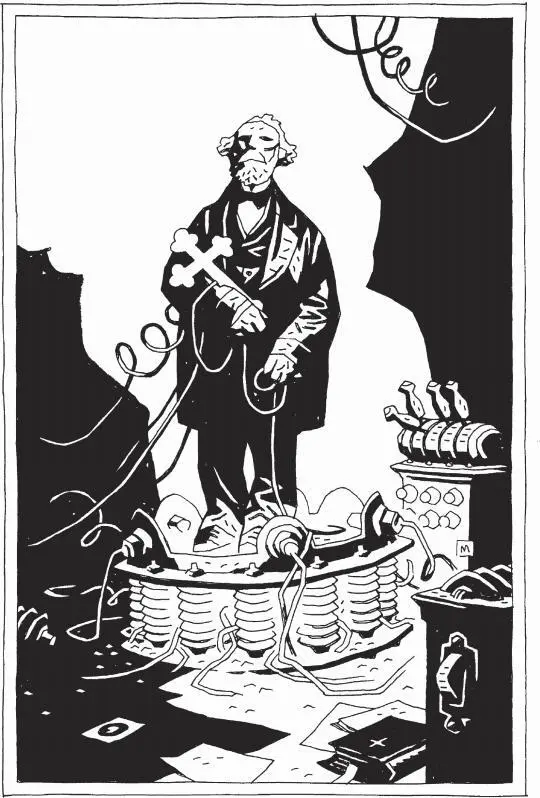
An unfortunate participant in an ill-fated conversion
With the help of his strange, unhuman assistant, Griff, Begg next discovered that Metropolitan Meat was being used by a corrupt entrepreneur known as Moses Monk to get rid of unwanted flesh. Aided by an accomplice on the premises, he introduced the meat into MMP’s supply. Monk made most of his money by working as a “waste-disposal merchant,” employed by unscrupulous merchants to get rid of organic material local councils refused to handle. However, Monk had a rather grislier arrangement with the Brookgate undertakers Ecker and Ecker to dispose of what they termed their “overspill”—paupers who had died without relatives in surrounding London boroughs. The council paid the Eckers by the corpse, supposedly buried in consecrated ground in simple lead coffins. It was far more profitable to let Monk handle the business, no questions asked, and sell the spare plots to grieving relatives. Yet this still did not explain the tiny “fairy” body parts discovered in Bermondsey. Under threat from young Begg and his strange assistant, Griff, Monk eventually confessed.
Of course, it was completely against the law to mix human remains with meat sold for consumption by animals, so Begg was at least responsible for bringing that filthy practise to an end.
The central mystery remained. Who were the “Lilliputians” and why was the government covering up their existence? Once again, Begg decided to put Griff the Man-Tracker on the case. Here is a description of Griff from the original fictionalised report in Union Jack no. 356, quoted on the Blakiana Web site:
Can it be a man—this strange, repulsive creature so stealthily stealing along? Surely no human being was ever so repulsively formed as this? Yet it is garbed as a man!
A bowler hat, long, loosely fitting black overcoat, baggy trousers, tan-coloured spats, and great, ill-shaped boots. But the face! How can we possibly describe it—or, rather, the little that can be seen of it? The bowler hat is full large for the head, and is drawn down over the forehead and skull, and rests upon large, outstanding, and hair-covered ears. Great blue spectacles, of double lens, cover the eyes and some portion of the visage. The nose is very flat, and of great width of nostrils. The unusual sight of a “respirator” can be seen well covering up the mouth. A great and light-coloured muffler also is so arranged that chin and jaws are both concealed; but what little of the face that can be detected is covered to the cheekbones with short and stiff-looking hair of a dull-brownish colour.
There is something strangely inhuman in the general expression, while the small, round eyes peer through the deep blue glasses like two brilliant sparks of fire.
Читать дальшеИнтервал:
Закладка:
Похожие книги на «The Thackery T. Lambshead Cabinet of Curiosities»
Представляем Вашему вниманию похожие книги на «The Thackery T. Lambshead Cabinet of Curiosities» списком для выбора. Мы отобрали схожую по названию и смыслу литературу в надежде предоставить читателям больше вариантов отыскать новые, интересные, ещё непрочитанные произведения.
Обсуждение, отзывы о книге «The Thackery T. Lambshead Cabinet of Curiosities» и просто собственные мнения читателей. Оставьте ваши комментарии, напишите, что Вы думаете о произведении, его смысле или главных героях. Укажите что конкретно понравилось, а что нет, и почему Вы так считаете.

